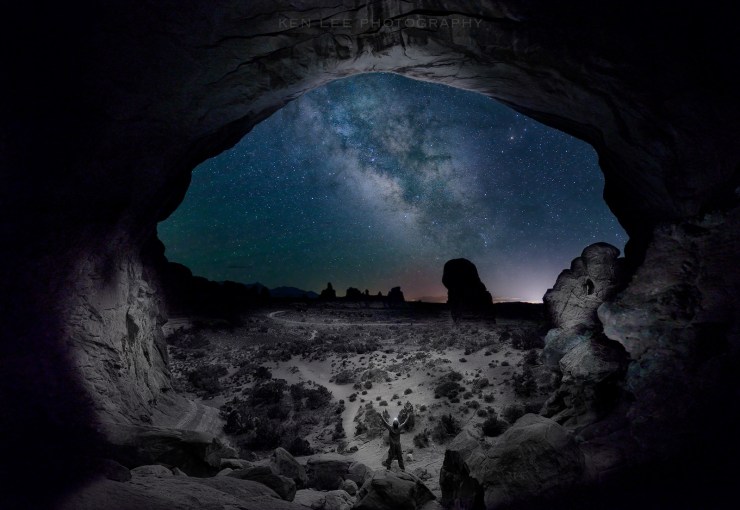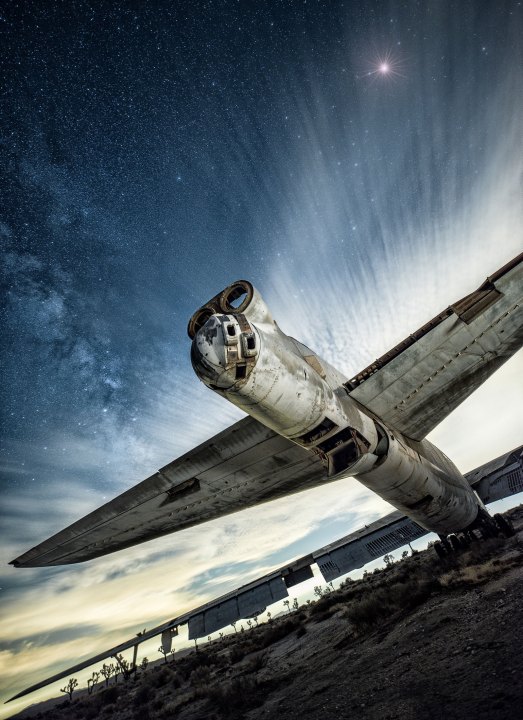The short version
Northern Hemisphere: Wait until “Milky Way season,” about April through October. Get away from light. Look south.
Southern Hemisphere: Wait until “Milky Way season,” about September through March. Get away from light. Look high up.
Short and sweet. But should I end the article right here? Let’s keep moving!

The longer version
When people talk about finding the Milky Way, they actually mean the galactic core of the Milky Way. Really, the Milky Way is visible throughout the year, whether we are in the Northern or Southern Hemisphere. After all, it’s our galaxy. It’s everywhere. But like everything else, we often speak this sort of “shorthand.”
OK, fine, how can I see the galactic core of the Milky Way?
First, we need to find dark skies. The darker, the better. We need to get away from light pollution and even the moon. Oh, and clear skies help, too.

Milky Way season
Night photographers often refer to the best time to view the galactic core as “Milky Way season.” Most people prefer to photograph the galactic core because it’s denser, more complex and has that “wow” factor.
In the Northern Hemisphere, “Milky Way season” is from about March or April to October. In the Southern Hemisphere, it’s flip-flopped, so it’s from about September to March. This is due to the way the earth spins on its axis, changing its angle as the months go by.
What do I look for?
I was giving a night photography workshop several years ago. We were in some very clear dark skies in the Mojave Desert. After half an hour, one participant walked up and said, “I still don’t see the Milky Way. When will it come out?”
I replied, “It’s already out.”
“Oh really? I guess I don’t see it.”
I pointed, moving my hand back and forth around the Milky Way arcing overhead. “That’s the Milky Way right there.”
“Oh. My. Gosh. I thought those were CLOUDS! That’s amazing! This is so exciting! This is the first time I’ve ever seen this! This is fantastic!” The person gave me a hug.
Yes, they can look like clouds. And yes, it is fantastic! And yes, it can provoke unadulterated joy. In dark skies, the Milky Way appears like a hazy and, well, milky band arching across the night sky, in many parts too dense to make out individual stars.
In many photos, however, the Milky Way looks considerably more vivid than what we see with our own eyes. Why? Modern cameras are much more sensitive to dim starlight. Also, our eyes grow increasingly monochrome as the light grows dimmer. Not so a camera. It can still “see” all the colors.

The galactic core
What people really want to see is the galactic core. This is the center of our galaxy. It looks denser and more complex, with more varying colors, because there is a greater concentration of stars as we look toward the middle of our galaxy. This has the most drama and is what most night photographers seek to photograph.
In the Northern Hemisphere, the core is visible by looking Southeast or South, depending on what time of night. The core begins to be visible in the southeast in March and April, south in July and August, and southwest in September and October. During the course of the evening, if you are facing more or less south, it keeps drifting to the right due to the rotation of the earth.
In the Southern Hemisphere, the core is visible by also looking generally south, depending on what time of night. The core also begins to be visible in the southeast in March and April, south and high up in the sky in July and August, and begins southwest in September and October. However, it’s considerably higher in the sky than in the Northern Hemisphere.
In my opinion, given equally dark skies, the galactic core of the Milky Way is denser and more vivid in the Southern Hemisphere than what we see in the Northern Hemisphere. And due to the tilt of the earth, people there can also see more of the galactic core. Also, in the Southern Hemisphere, it is winter, often giving less humid skies and crisper stars.
Using apps
Apps can make things quite a bit easier. Using free or inexpensive mobile apps such as Sky Guide, SkyView Lite or PhotoPills can make locating the Milky Way much easier.
These can even show parts of the Milky Way that are still lower than the horizon and can show you where the Milky Way is going to move over time in the night sky. This can be useful for stargazing or planning one’s photos while incorporating the galactic core of the Milky Way. They can also show you if the moon is going to be out, and if so, when and where.
Tell your story with the second annual Visual Storytelling Conference!
Experience four days of interactive, online training sessions featuring a range of educational content with experienced photographers and content creators. This free event kicks off with a series of technical boot camps to build essential skills, followed by live, online sessions on photography, video, business and social media. Join live from March 10-13, 2022!
